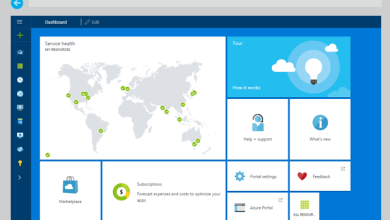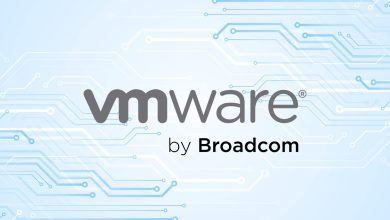Can a Cloud PBX Cut Costs? Yes, $240 Per User Each Year

Cloud PBX (Private Branch Exchange) is a modern upgrade to traditional phone systems. It’s web-based communication software that allows users to login to the system like any other piece of software — via a web browser, desktop app, or mobile app. They can also use IP-enabled desk phones, but they don’t have to.
Administrators can manage settings, add or remove users, and troubleshoot with the same ease. It’s just as easy to deploy with no need for physical wires or infrastructure.
Aside from convenience and ease, there’s another major benefit: cutting costs.
1
Connecteam
Connecteam’s internal communication solution gives you all the tools to communicate and collaborate with your non-desk employees, specifically designed to meet yours and your business needs. With this set of tools, your entire company is connected and able to communicate efficiently, productively, and securely – everything is measurable, recorded, and in your control.
Learn more
Potential savings vs landline systems
A cloud PBX service costs around $30 per user per month on average. This is a conservative estimate, reflecting the cost of a plan with a standard feature set.
Traditional phone lines cost around $50 per user per month, not including maintenance.
$20 in savings may not sound like much, but it comes out to $240 per year. Plus, that’s per user. With 20 users, you’ll save $4,800 per year.
In reality, the savings are likely much more. You won’t have to worry about system maintenance, upgrades, or anything like that. All of that should be covered in your regular monthly subscription fees.
If you already have a full in-house IT team, you could manage your own cloud system for even less — these systems can run as low as $5 per user per month.
Even though these numbers are just an estimate, they highlight the savings potential.
What does a cloud PBX include?
First and foremost, cloud-based setup eliminates the need for an expensive upfront investment. And since there’s no physical infrastructure, these types of systems are incredibly flexible and scalable.
But perhaps the most important aspect is that users can make and take calls from any device that’s connected to the internet (this is called a softphone).
They don’t have to be at their desk if they have the mobile app on their smartphone. Plus, they’ll be able to work from home and use their laptop in place of a desk phone. Ultimately, it offers unmatched mobility.
Beyond that, cloud PBX includes a range of features that are difficult or impossible to get from a legacy PSTN system.
Every provider offers different features, but most come with standard capabilities, including:
- Unlimited inbound and outbound calls: Most providers don’t limit you. There are some that offer lower monthly fees but limit you to 500 or 1,000 minutes per month. That could be a smart way to save money if you have users who rarely use the phone.
- Voicemail: Often with advanced features, like voicemail-to-email, voicemail transcriptions, and visual voicemail.
- Text messaging: This is often included on the entry-level or middle tier with most providers. Users can text with customers, clients, and each other.
- Collaboration tools: Many cloud PBX systems include videoconferencing, audio conferencing, team chat, file sharing, and even faxing. Rather than separate subscriptions, you get them all in one platform.
- Call routing: You’ll be able to set up custom call routing and forwarding rules based on factors like time of day, holidays, or lunch breaks.
- Caller ID: This gives you visibility into who’s calling. If you connect a CRM, you may be able to see additional details, like previous purchases, before you answer.
- Call recording: You’ll be able to store recordings for a specific amount of time and choose from manual or automated recording. You may have to upgrade to the middle or top tier for this depending on the provider.
- A virtual receptionist: Want to professionally greet callers? This is how you do it.
- Basic analytics: Most systems cover the basics, like call logs, quality of service, and standard usage data.
For most teams, a standard phone system with the capabilities above is sufficient.
However, call centers, sales, and customer support teams likely need more robust opportunities for customization, automation, and handling calls at volume.
While these types of systems cost more, you get what you pay for. Advanced cloud PBX features include:
- IVR: Interactive voice response lets you create a phone menu so callers can route themselves to the right person.
- Automatic call distribution: ACD lets you set up a range of rules that dictate how calls are routed to different departments and employees. There are a range of strategies, including skills-based, next-available-agent, preferred-agent, and more.
- Callbacks: If your queue gets too long, you can automatically offer callers the option for you to call them back when they reach the front of the line.
- Auto dialers: Predictive, progressive, and power dialing make it easier for users to call a large number of people. Different types of dialers have different characteristics, but the goal is efficient outbound calling.
- Speech analytics: This takes standard analytics to the next level. The system transcribes calls and can help identify recurring themes, sentiment, customer satisfaction, agent engagement, compliance adherence, and more.
- Workforce optimization: Scheduling, forecasting, engagement, performance management, and quality assurance become more important as your team grows.
Whether you need basic features or advanced capabilities, upgrading to a better plan that offers more doesn’t require a brand new system.
All you have to do is reach out to your provider. They’ll handle the rest. When they’re done upgrading your account, you’ll have all the new tools and functionality you need right within the same software you were already using.
Cloud PBX vs managing your own system
Earlier, I said you can save even more if you manage your own cloud PBX system. While that’s true, cost isn’t the only thing to consider when making this decision.
You should also think about technical expertise, resource allocation, security requirements, and your business’s needs.
Managing your own cloud phone system
It might seem straightforward to buy software and install it on your own servers. However, the reality is more complex. You’ll need an IP PBX to route calls and SIP trunking services, which allow your IP PBX to connect with landlines, VoIP phone systems, and mobile phones.
Beyond setup, you’re also responsible for security, redundancy, and quality of service.
If you don’t already have an experienced IT team in place, you’ll have to hire one.
The upside is that you’ll be able to customize everything to match your needs at a much lower price point. You also won’t be at the mercy of a third party with their own requirements, rules, and regulations.
Overall, managing it yourself is more approachable for larger businesses or those with specialized needs that a paid cloud PBX service can’t fulfill.
Using a cloud PBX service
A cloud PBX service costs more per user, but eliminates the burden of managing the system yourself — your provider handles security, updates, maintenance, redundancy, and everything else required.
It’s a hassle-free option that makes it possible for even the smallest of businesses to have a dedicated phone system.
Bottom line? Each approach has its merits. In-house management offers greater control and customization, while cloud PBX services give you more ease and convenience.




